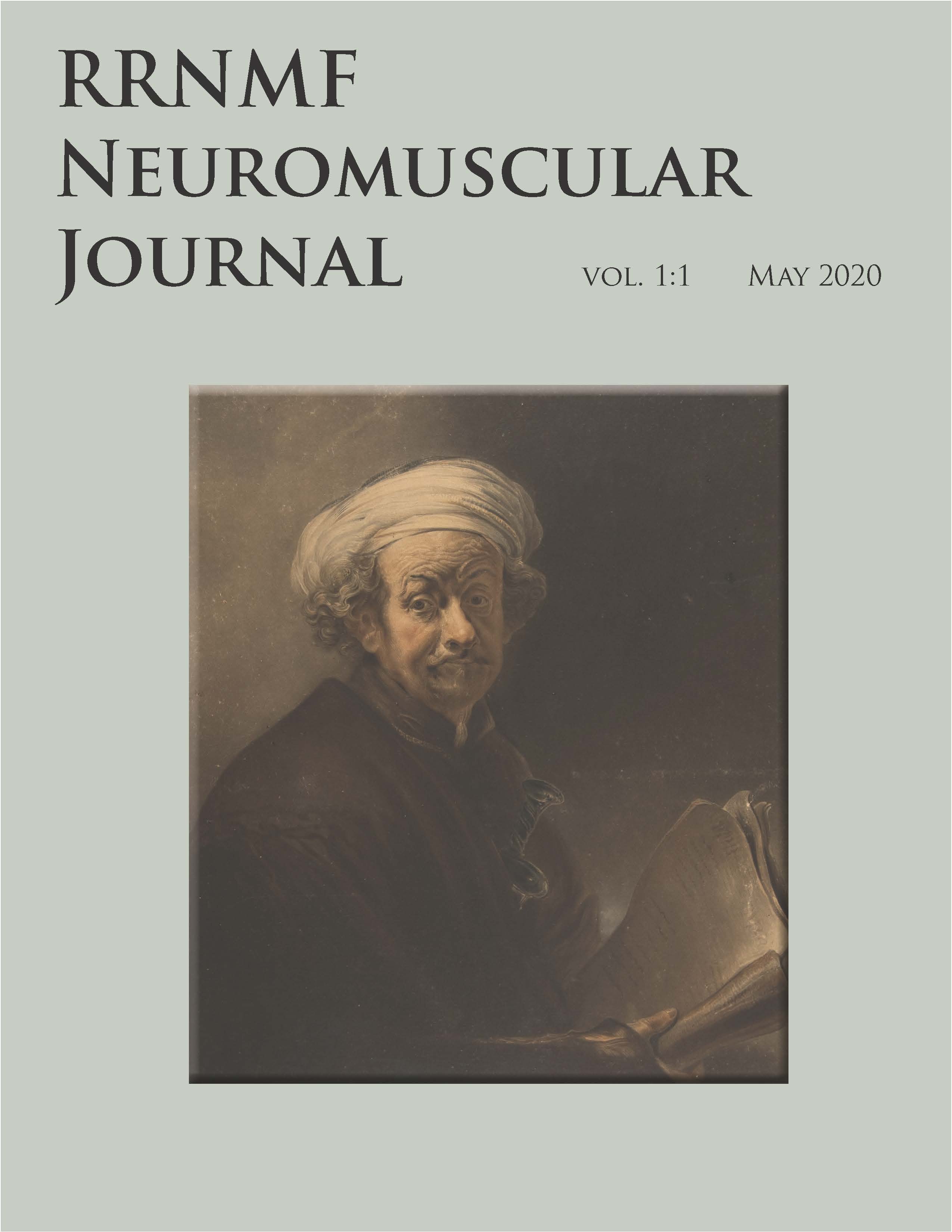Safety of Needle Electromyography in Critically Ill Patients
DOI:
https://doi.org/10.17161/rrnmf.v1i1.13544Keywords:
Needle EMG, ICU patients, Electro-Diagnostic Study, Safety of EMGEMG in Critically IllAbstract
Introduction: To evaluate the safety of needle electromyography (EMG) in critically ill intensive care unit (ICU) patients who are on anticoagulants and have comorbidities that increase the risk of bleeding and infections.
Methods: We conducted a retrospective chart review of critically ill patients who underwent needle EMG studies. The most common complications followed by needle EMG were reviewed and classified based upon common terminology criteria for adverse events (CTAC) criteria. Descriptive statistics were reported using the frequencies and percentages for categorical variables. The mean and interquartile range is used for continuous variables. All analyses were conducted using the Statistical Package for the Social Sciences (IBM SPSS Statistic Version 21, IMB Inc., Chicago, IL.
Results: Twenty-nine patients were included. 17 (58.6%) were males with a mean age of 60.8 +/- 16.7 years. The mean PT, PTT, and INR were 15.2 sec, 36.5 seconds, and 1.13, respectively. Fourteen (48.2%) patients in this cohort were treated with low molecular weight heparin (LMWH), and an additional 8 (27.5%) patients were administered subcutaneous (SC) heparin for deep vein thrombosis prophylaxis. Therapeutic heparin was being used in 3 (10.3%) patients and sequential compression devices (SCDs) in 4 (13.7%) patients. A total of 228 muscles were tested. Among them, 38 (16.6%) were deep muscles. There were no major bleeding complications at the time of the procedure and for the next seven days in any of the patients, including those with multiple medical comorbidities. All our patients met the grade 1 scale in the severity of adverse events criteria proposed by CTCAE.
Conclusion: Needle EMG is safe in critically ill ICU patients on anticoagulants and multiple comorbidities including those that increase the risk of bleeding and infection.
Downloads
Downloads
Published
Issue
Section
License
Copyright (c) 2020 Elanagan Nagarajan, Pradeep Bollu, Lakshmi Digala, Anudeep Yelam, Raghav Govindarajan, Thomas Brannagan

This work is licensed under a Creative Commons Attribution-NonCommercial-NoDerivatives 4.0 International License.

